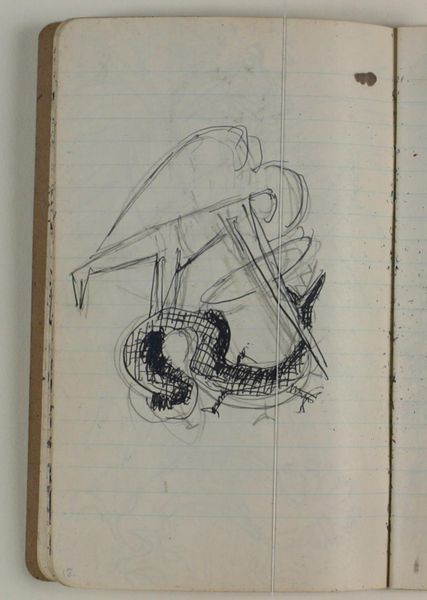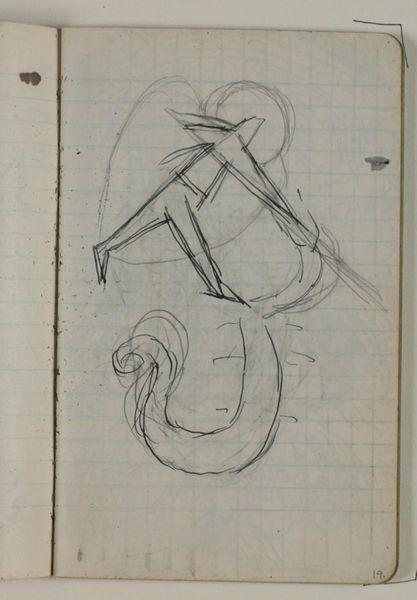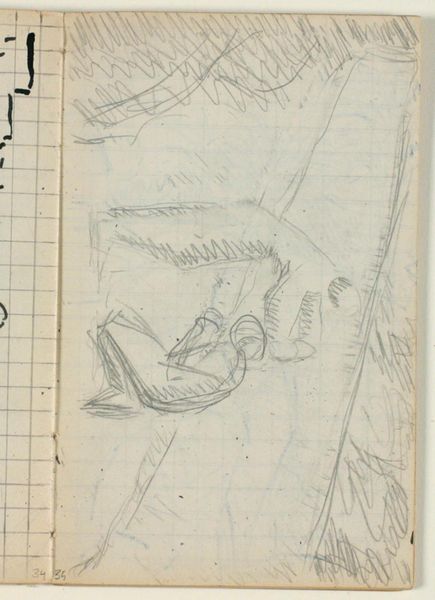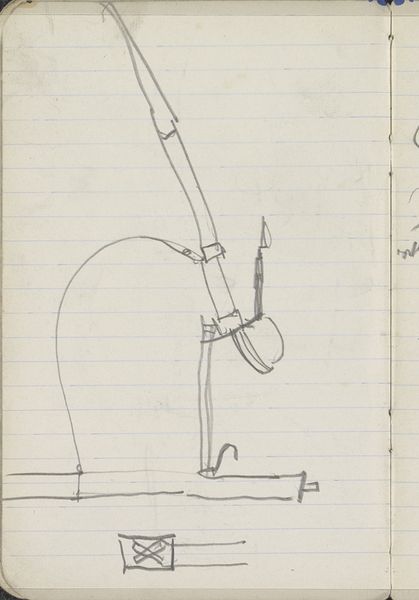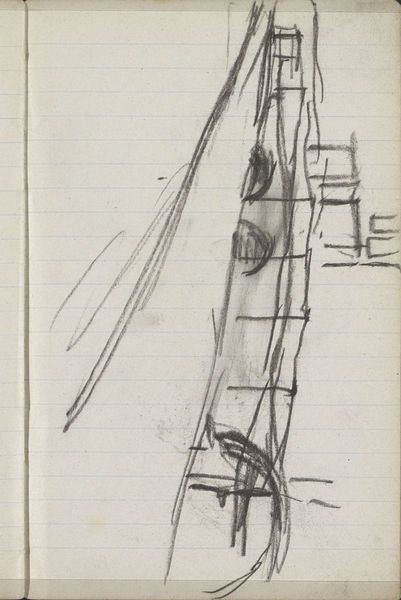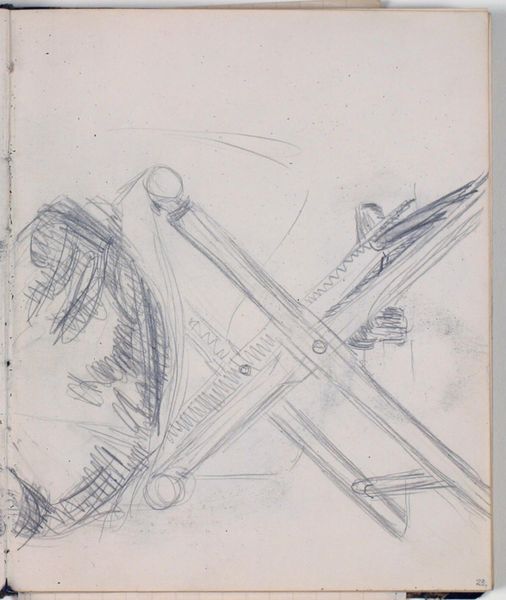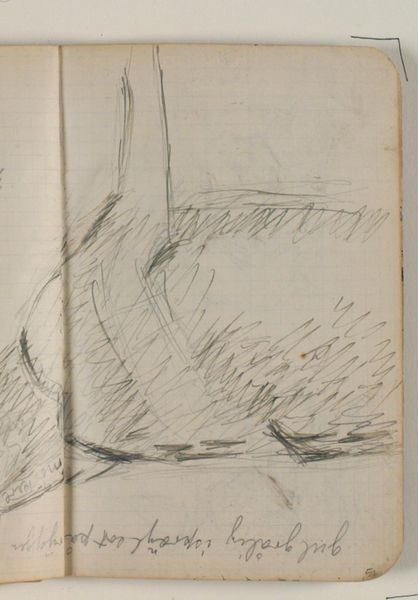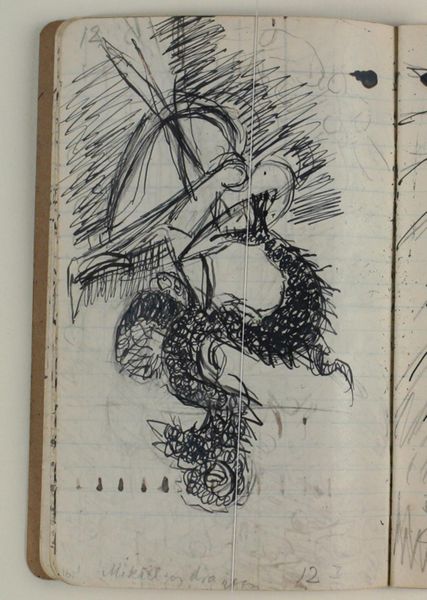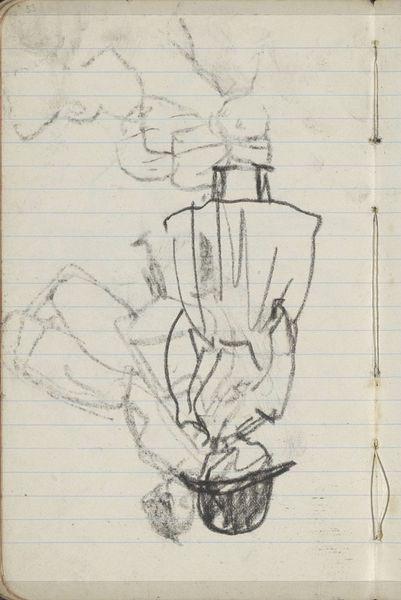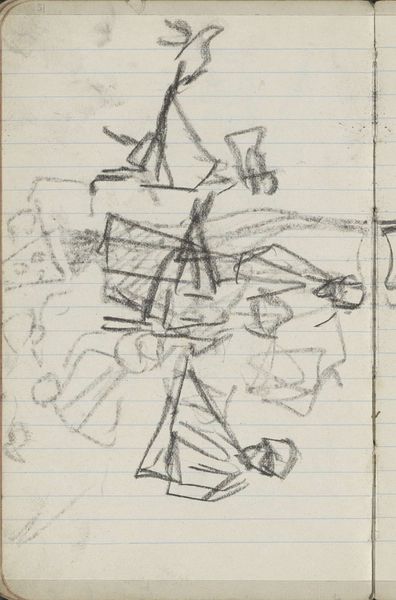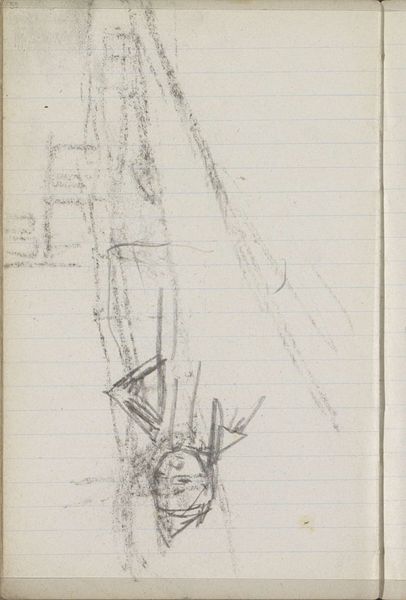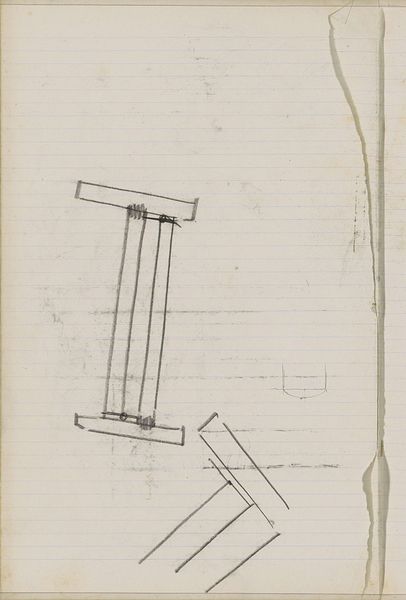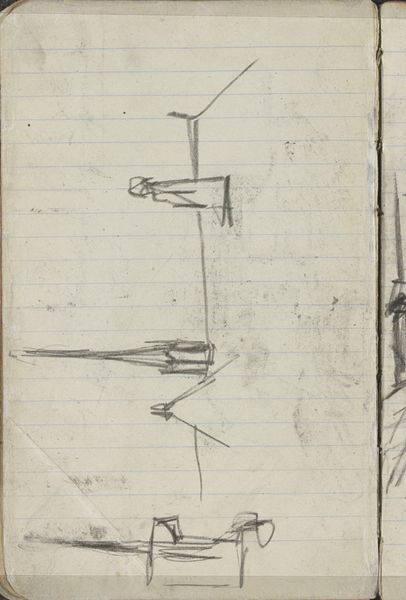
drawing, ink
#
drawing
#
pen sketch
#
ink
#
geometric
#
abstraction
Dimensions: 175 mm (height) x 109 mm (width) (monteringsmaal), 175 mm (height) x 109 mm (width) (bladmaal)
Curator: It's captivating how raw this feels. So immediate. Editor: Indeed. What we have here is a pen and ink drawing by Niels Larsen Stevns, made between 1933 and 1934. It's titled "Archangel Michael's fight with the dragon." Curator: I'm interested in the materials chosen. Pen and ink. Simple, accessible, economical. It suggests a sense of urgency or perhaps an intention not to monumentalize, but rather, to explore an idea. Was this a study, a sketch for a larger piece maybe? The sketch itself feels very abstract, especially how Stevns renders the dragon, using simple shapes, hatching and circular strokes, and the marks around it, that seems a chaotic maelstrom around a very centralized form. Editor: Well, Stevns was working within a period heavily shaped by theological debate and emerging psychological theories, it's compelling to consider that perhaps that is what’s going on here and how this abstraction reflects the struggle between faith, doubt, reason and madness. Public discourse at this time was extremely concerned about religion and this struggle for a strong identity as an individual. His personal experiences and societal forces undoubtedly influenced the selection of this imagery. Curator: Precisely! The scale invites intimate engagement. Look at how the marks accumulate, building this furious form of darkness below the Archangel's simplified, yet assertive lines of form. And what does it mean when such powerful themes become translated into basic forms for visual representation? It pushes our consideration toward the processes of representing a powerful idea. Editor: Yes. It brings this ancient theme into dialogue with Modernism and inter-war anxieties, as well. Stevns was creating works that speak to social changes, but also to how public interest around religion was expressed during his own time. He's almost grappling with how traditional iconography operates. It reflects Stevns' own socio-political surroundings during a difficult period in Danish history. Curator: Ultimately, Stevns prompts us to look at not just the symbols, but also at the conditions of mark-making itself. Editor: Right. It is clear he invites a crucial consideration of not only socio-political contexts of artwork production, but also of its reception in both modern and future viewing audiences.
Comments
No comments
Be the first to comment and join the conversation on the ultimate creative platform.
